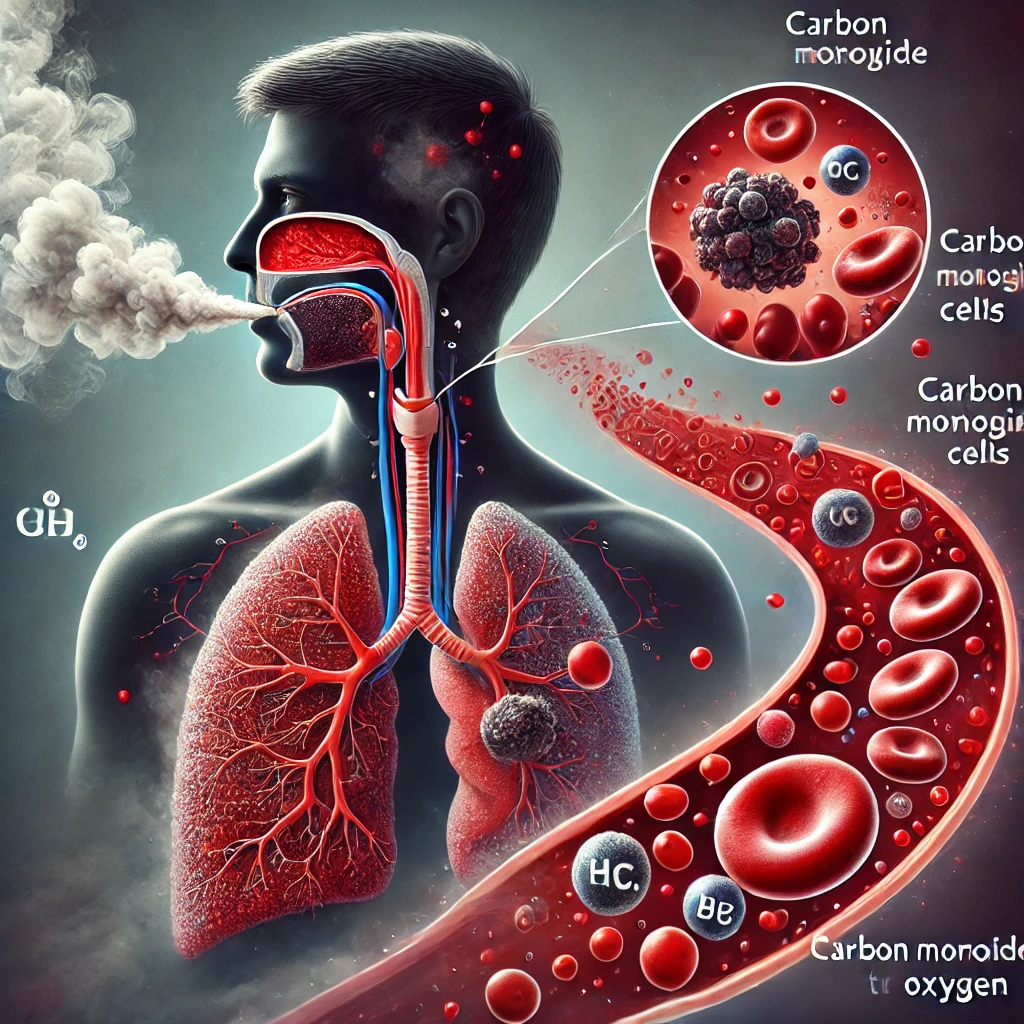The Pulse of Life : Demystifying Blood Pressure and Its Impact on Your Health
Blood pressure – a term we often hear but may not fully understand. It’s a vital sign that plays a crucial role in our overall health, yet it’s often overlooked until it becomes a problem. In this comprehensive guide, we’ll explore what blood pressure is, why it matters, and how you can take control of this essential aspect of your well-being.
What is Blood Pressure?
At its core, blood pressure is the force of blood pushing against the walls of your arteries as your heart pumps blood (American Heart Association [AHA], 2023). This pressure is necessary to move blood through your body, delivering oxygen and nutrients to your organs and tissues. However, like many things in life, balance is key.
Bp is measured using two numbers:
- Systolic pressure: The pressure when your heart beats and pushes blood out.
- Diastolic pressure: The pressure when your heart rests between beats.
These numbers are typically written as systolic over diastolic, such as 120/80 mmHg (millimeters of mercury).
The Silent Killer : Why Blood Pressure Matters
High bp, also known as hypertension, is often called the “silent killer” because it typically has no symptoms. Yet, its impact on your health can be severe. According to the World Health Organization (WHO, 2021), hypertension is a major cause of premature death worldwide.
Uncontrolled high bp can lead to:
- Heart disease and heart attacks
- Stroke
- Kidney damage
- Vision problems
- Sexual dysfunction
- Cognitive decline and dementia
On the flip side, low blood pressure (hypotension) can cause dizziness, fainting, and in severe cases, life-threatening shock (Mayo Clinic, 2022).
Understanding Blood Pressure Readings
The American College of Cardiology and American Heart Association (2017) define blood pressure categories as follows:
- Normal: Less than 120/80 mmHg
- Elevated: 120-129/less than 80 mmHg
- Hypertension Stage 1: 130-139/80-89 mmHg
- Hypertension Stage 2: 140/90 mmHg or higher
- Hypertensive Crisis: Higher than 180/120 mmHg
It’s important to note that a single high reading doesn’t necessarily mean you have high bp. Your doctor will likely take multiple readings over time before making a diagnosis.
Factors Influencing Blood Pressure
Bp is influenced by a complex interplay of factors, including:
- Age: Blood pressure tends to rise with age due to stiffening of arteries (Chobanian et al., 2003).
- Genetics: Family history can play a role in your risk for hypertension (Kupper et al., 2005).
- Diet: High salt intake, excessive alcohol consumption, and a diet low in potassium can contribute to high bp (Sacks et al., 2001).
- Physical activity: Regular exercise helps maintain healthy blood pressure (Cornelissen & Smart, 2013).
- Weight: Being overweight or obese increases your risk of hypertension (Hall et al., 2015).
- Stress: Chronic stress can contribute to high blood pressure (Spruill, 2010).
- Smoking: Tobacco use can cause a temporary spike in blood pressure and contribute to artery damage (Virdis et al., 2010).
- Sleep: Poor sleep quality and sleep disorders like sleep apnea are associated with hypertension (Pepin et al., 2014).
Taking Control: Managing Your Blood Pressure
The good news is that there are many ways to manage your bp and reduce your risk of related health problems:
Embrace the DASH Diet
The Dietary Approaches to Stop Hypertension (DASH) diet has been shown to significantly lower bp. This eating plan emphasizes:
- Fruits and vegetables
- Whole grains
- Lean proteins
- Low-fat dairy products
- Limited saturated fats and sugars
A study by Sacks et al. (2001) found that the DASH diet could lower systolic bp by up to 11 mmHg.
Reduce Sodium Intake
The AHA (2023) recommends limiting sodium intake to no more than 2,300 mg per day, with an ideal limit of 1,500 mg for most adults. Be aware of hidden sodium in processed foods and restaurant meals.
Stay Active
Regular physical activity can lower your blood pressure by 5 to 8 mmHg (Cornelissen & Smart, 2013). Aim for at least 150 minutes of moderate-intensity aerobic activity or 75 minutes of vigorous-intensity aerobic activity per week.
Maintain a Healthy Weight
Losing just 5-10% of your body weight can significantly reduce bp in overweight individuals (Neter et al., 2003).
Limit Alcohol Consumption
If you drink, do so in moderation. That means up to one drink per day for women and up to two drinks per day for men (AHA, 2023).
Quit Smoking
Quitting smoking can reduce your risk of heart disease and improve your overall health. Within minutes of quitting, your bp begins to recover (U.S. Department of Health and Human Services, 2020).
Manage Stress
Incorporate stress-reduction techniques into your daily routine, such as meditation, deep breathing exercises, or yoga. A study by Ospina et al. (2007) found that meditation programs can have a small but significant effect on bp.
Get Enough Sleep
Aim for 7-9 hours of quality sleep per night. If you suspect you have sleep apnea, talk to your doctor about getting tested and treated (Pepin et al., 2014).
Monitor Your Blood Pressure
Regular monitoring can help you track your progress and alert you to any changes. Home blood pressure monitors are widely available and can be a valuable tool in managing your health.
Medication
For some people, lifestyle changes alone may not be enough to control bp. In these cases, your doctor may prescribe medication. Common types include:
- Diuretics
- ACE inhibitors
- Calcium channel blockers
- Beta-blockers
It’s crucial to take medications as prescribed and not to stop without consulting your doctor.
The Future of Blood Pressure Management
As our understanding of bp grows, so do our methods for managing it. Emerging technologies and treatments show promise:
- Wearable devices for continuous bp monitoring
- Personalized medicine approaches based on genetic profiles
- Renal denervation procedures for resistant hypertension
- AI-powered risk prediction and management strategies
Research by Kario (2021) suggests that these innovations could revolutionize how we approach bp control in the coming years.
Conclusion: Your Heart, Your Life
Understanding and managing your bp is a crucial step towards a healthier, longer life. By making informed choices about your diet, physical activity, and overall lifestyle, you can take control of your bp and reduce your risk of serious health complications.
Remember, high bp is preventable and manageable. Regular check-ups, a healthy lifestyle, and open communication with your healthcare provider are your best defenses against this silent killer.
Your heart works tirelessly to keep you alive – isn’t it time you returned the favor?
Written by : Farokh Shabbir
References
American Heart Association. (2023). Understanding Blood Pressure Readings. https://www.heart.org/en/health-topics/high-blood-pressure/understanding-blood-pressure-readings
Chobanian, A. V., Bakris, G. L., Black, H. R., Cushman, W. C., Green, L. A., Izzo Jr, J. L., … & Roccella, E. J. (2003). Seventh report of the joint national committee on prevention, detection, evaluation, and treatment of high blood pressure. Hypertension, 42(6), 1206-1252.
Cornelissen, V. A., & Smart, N. A. (2013). Exercise training for blood pressure: a systematic review and meta‐analysis. Journal of the American Heart Association, 2(1), e004473.
Hall, J. E., do Carmo, J. M., da Silva, A. A., Wang, Z., & Hall, M. E. (2015). Obesity-induced hypertension: interaction of neurohumoral and renal mechanisms. Circulation research, 116(6), 991-1006.
Kario, K. (2021). Precision Medicine in Hypertension: Emerging Technologies and Concepts. Hypertension, 77(6), 1830-1842.
Kupper, N., Willemsen, G., Riese, H., Posthuma, D., Boomsma, D. I., & de Geus, E. J. (2005). Heritability of daytime ambulatory blood pressure in an extended twin design. Hypertension, 45(1), 80-85.
Mayo Clinic. (2022). Low blood pressure (hypotension). https://www.mayoclinic.org/diseases-conditions/low-blood-pressure/symptoms-causes/syc-20355465
Neter, J. E., Stam, B. E., Kok, F. J., Grobbee, D. E., & Geleijnse, J. M. (2003). Influence of weight reduction on blood pressure: a meta-analysis of randomized controlled trials. Hypertension, 42(5), 878-884.
Ospina, M. B., Bond, K., Karkhaneh, M., Tjosvold, L., Vandermeer, B., Liang, Y., … & Klassen, T. P. (2007). Meditation practices for health: state of the research. Evidence report/technology assessment, (155), 1-263.
Pepin, J. L., Borel, A. L., Tamisier, R., Baguet, J. P., Levy, P., & Dauvilliers, Y. (2014). Hypertension and sleep: overview of a tight relationship. Sleep medicine reviews, 18(6), 509-519.
Sacks, F. M., Svetkey, L. P., Vollmer, W. M., Appel, L. J., Bray, G. A., Harsha, D., … & Karanja, N. (2001). Effects on blood pressure of reduced dietary sodium and the Dietary Approaches to Stop Hypertension (DASH) diet. New England journal of medicine, 344(1), 3-10.
Spruill, T. M. (2010). Chronic psychosocial stress and hypertension. Current hypertension reports, 12(1), 10-16.
U.S. Department of Health and Human Services. (2020). Smoking Cessation: A Report of the Surgeon General. https://www.hhs.gov/sites/default/files/2020-cessation-sgr-full-report.pdf
Virdis, A., Giannarelli, C., Neves, M. F., Taddei, S., & Ghiadoni, L. (2010). Cigarette smoking and hypertension. Current pharmaceutical design, 16(23), 2518-2525.
World Health Organization. (2021). Hypertension. https://www.who.int/news-room/fact-sheets/detail/hypertension











